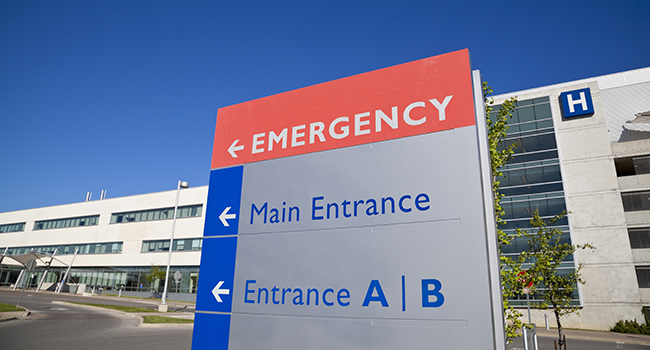
Wyoming Medical Center Boosts Security Following Active Shooter Incident
Wyoming Medical Center plans to upgrade its security equipment and protocols following a shooting and lockdown last month.
- By Jessica Davis
- April 08, 2019
Wyoming Medical Center is working to upgrade its security equipment and protocols following a shooting and lockdown last month. The Casper Police Department completed an assessment of the building last week, and the building will also be examined by a firm specializing in health care security.
On March 4, 2019, a man entered the hospital through a backdoor after midnight, armed with a handgun. He shot a total of seven times at two WMC employees, hitting neither, and was later apprehended by police in a tunnel beneath the hospital.
WMC Chief Administrative Officer Mike Staley said staff did “everything right” during the shooting incident, including reporting it immediately and seeking shelter and taking care of patients.
Within several hours of the incident, hospital officials and law enforcement had met and identified issues with “ingress into the building” and other concerns, according to David Hulshizer, the hospital’s security manager. Fewer than 24 hours after the shooter was able to break into the building, the hospital began locking all entrance doors between 10 p.m. and 7 a.m., except for the entrance to the emergency department.
Some of the hospital’s doors have been identified as employee-only, and WMC is upgrading several entrances to make them accessible only by staff with badges. According to hospital CEO Michele Chulick, that includes doors both inside and outside of the building.
The March incident raised questions about why exterior hospital doors were unlocked after hours. Officials said the hospital wanted to be accessible to patients and families.
“The majority of doors I would say were locked,” Chulick said. “But it is — when you think about the access from the garages for patients and families to come in to visit a loved one after hours, we were permitting that. […] “There were doors that we realized that were there for convenience that we have now locked.”
Officials said hospital security is now much stricter in terms of after-hours access. Security keeps a log and checks with nurses before they buzz visitors into the building late at night, and the hospital plans to install high-resolution security cameras so guards can see who is at entrance doors.
The emergency department is the only unlocked door in the building after 10 p.m., and it’s been staffed by a local law enforcement officer from either the Natrona County Sheriff’s Office or the Mills or Casper police departments since the shooting.
The emergency department also has metal detectors and a constantly staffed security desk. All patients entering the ED are now required to go through the metal detectors, Chulick said; in the past, sicker patients could be waved through, but no longer.
The hospital is looking to install new cameras that would allow law enforcement dispatchers to access live feeds to provide emergency responders with real-time updates in case of an emergency. Keys will be placed in lock boxes in strategic locations around the building’s exterior to allow officers to gain entry to the locked down facility after hours, and the hospital has provided updated blueprints to law enforcement agencies.
Officials said the hospital is considering hiring its own security instead of contracting out security services as it does currently. If the hospital had its own security staff, it could provide more health care-specific protection, which is particularly important when handling patients who may be experiencing a mental illness-related crisis.
Chulick said WMC was considering “all options” in terms of full-time security staff, including whether to arm security guards. The hospital’s current contracted security is not armed.
Staley said WMC is looking at more training that can be provided to staff members, including a video called “Shots Fired for Healthcase,” which would teach a proactive response of “run, hide or fight.”
Officials said the training wouldn’t include practice scenarios such as those run by the Natrona County School District because of the complications with conducting a drill in a working hospital. Staley said individual departments would break down the exercises to discuss them in more detail.
According to Staley and Chulick, hospital staff did “what they’d been trained to do” during the March 4 incident.
“We’re just taking it up a notch,” Chulick said, “because we’ve experienced it.”